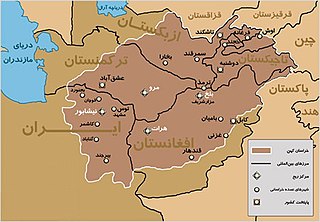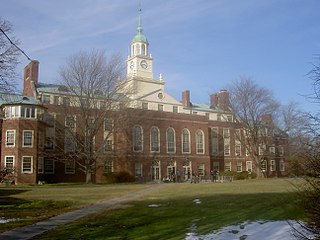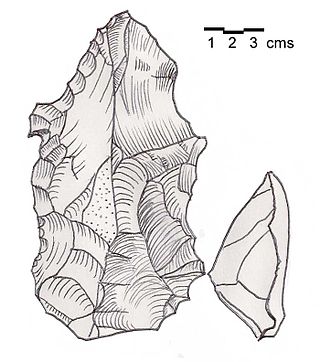
The United States Central Command is one of the eleven unified combatant commands of the U.S. Department of Defense. It was established in 1983, taking over the previous responsibilities of the Rapid Deployment Joint Task Force (RDJTF).

Pasargadae /pə'sɑrgədi/ was the capital of the Achaemenid Empire under Cyrus the Great. Today it is an archaeological site located just north of the town of Madar-e-Soleyman and about 90 kilometres (56 mi) to the northeast of the modern city of Shiraz. It is one of Iran's UNESCO World Heritage Sites. It is considered to be the location of the Tomb of Cyrus, a tomb previously attributed to Madar-e-Soleyman, the "Mother of Solomon".

Greater Khorāsān, or Khorāsān, is a historical eastern region in the Iranian Plateau between Western and Central Asia. The name Khorāsān is Persian meaning "where the sun arrives from" or "the Eastern Province". The name was first given to the eastern province of Persia during the Sasanian Empire and was used from the late Middle Ages in distinction to neighbouring Transoxiana. Greater Khorasan is today sometimes used to distinguish the larger historical region from the former Khorasan Province of Iran (1906–2004), which roughly encompassed the western portion of the historical Greater Khorasan.

The Minaret of Jam is a UNESCO World Heritage Site in western Afghanistan. It is located in a remote and nearly inaccessible region of the Shahrak District, Ghor Province, next to the Hari River. The 62 m (203 ft) or 65 m (213 ft) high minaret was built around 1190 entirely of baked bricks and is famous for its intricate brick, stucco and glazed tile decoration, which consists of alternating bands of kufic and naskhi calligraphy, geometric patterns, and verses from the Qur'an. Since 2002, the minaret has remained on the list of World Heritage in Danger, under serious threat of erosion, and has not been actively preserved. In 2014, the BBC reported that the tower was in imminent danger of collapse.

MENA, an acronym in the English language, refers to a grouping of countries situated in and around the Middle East and North Africa. It is also known as WANA, SWANA, or NAWA, which alternatively refers to the Middle East as Western Asia and is a way to refer to the geography instead of the political term.

Ernst Emil Herzfeld was a German archaeologist and Iranologist.

The Quds Force is one of five branches of Iran's Islamic Revolutionary Guard Corps (IRGC) specializing in unconventional warfare and military intelligence operations. U.S. Army's Iraq War General Stanley McChrystal describes the Quds Force as an organization analogous to a combination of the CIA and the Joint Special Operations Command (JSOC) in the United States. Responsible for extraterritorial operations, the Quds Force supports non-state actors in many countries, including Hezbollah, Hamas, Palestinian Islamic Jihad, Yemeni Houthis, and Shia militias in Iraq, Syria, and Afghanistan.

Oleg Grabar was a French-born art historian and archeologist, who spent most of his career in the United States, as a leading figure in the field of Islamic art and architecture.

Abu Musab al-Zarqawi, born Ahmad Fadeel al-Nazal al-Khalayleh, was a Jordanian jihadist who ran a terrorist training camp in Afghanistan. He became known after going to Iraq and being responsible for a series of bombings, beheadings, and attacks during the Iraq War, reportedly "turning an insurgency against US troops" in Iraq "into a Shia–Sunni civil war". He was sometimes known by his supporters as the "Sheikh of the slaughterers".

Donny George Youkhanna was an Iraqi-Assyrian archaeologist, anthropologist, author, curator, and scholar, and a visiting professor at Stony Brook University in New York.

The ancient Near East was the home of early civilizations within a region roughly corresponding to the modern Middle East: Mesopotamia, ancient Egypt, ancient Iran, Anatolia/Asia Minor and the Armenian highlands, the Levant, Cyprus and the Arabian Peninsula. The ancient Near East is studied in the fields of Ancient Near East studies, Near Eastern archaeology and ancient history.
William "Bill" Culican was an Australian archaeologist and lecturer in biblical archaeology and pre-classical antiquity at the University of Melbourne.

Kfar Abida, is a village located 2 kilometres (1.2 mi) south of Batroun in the Batroun District of the North Governorate in Lebanon. On the coast, in the southwest of the town, lies an archaeological tell, Tell Fadous. Located south of the tell, is Fadous Sud, a Heavy Neolithic site of the Qaraoun culture.

Major General Sir Robert Murdoch Smith KCMG FRSE was a Scottish engineer, archaeologist and diplomat. He is known for his involvement with the excavation of antiquities found at Knidos and Cyrene, the telegraph to Iran, Persian antiquities bought for the Victoria and Albert Museum, and for serving as Director of the Edinburgh Museum of Science and Art.

In response to rapid territorial gains made by the Islamic State during the first half of 2014, and its universally condemned executions, reported human rights abuses and the fear of further spillovers of the Syrian Civil War, many states began to intervene against it in both the Syrian Civil War and the War in Iraq. Later, there were also minor interventions by some states against IS-affiliated groups in Nigeria and Libya.
Tony James Wilkinson, FBA was a British archaeologist and academic, specialising in landscape archaeology and the Ancient Near East. He was Professor of Archaeology at the University of Edinburgh from 2005 to 2006, and Professor of Archaeology at Durham University from 2006 to until his death in 2014.
Edward Ernest David Michael Oates,, known as David Oates, was a British archaeologist and academic specializing in the Ancient Near East. He was director of the excavations at Nimrud from 1958 to 1962, Tell al-Rimah from 1964 to 1971 and at Tell Brak from 1976 to 2004. He was Professor of Western Asiatic Archaeology at the Institute of Archaeology from 1969 to 1982 and Fellow of the McDonald Institute for Archaeological Research from 1997 to 2004.
Joan Louise Oates, FBA was an American-British archaeologist and academic, specialising in the Ancient Near East. From 1971 to 1995 she was a Fellow and tutor of Girton College, Cambridge, and a Lecturer at the University of Cambridge. From 1995 she was a Senior Research Fellow of the McDonald Institute for Archaeological Research. From 2004 she was director of the excavations of Tell Brak, having been co-director, with her husband, David Oates, between 1988 and 2004.
Robert William Hamilton, FBA was a British archaeologist and academic. He was senior lecturer in Near Eastern archaeology at the University of Oxford from 1949 to 1956 and a fellow of Magdalen College, Oxford, from 1959 to 1972. He was keeper (head) of the Ashmolean Museum from 1962 to 1972.

Professor Malcolm Andrew Richard Colledge was a British archaeologist who made many visits to the Middle East and was an expert in the art of Palmyra. He was arrested in Jordan and Turkmenistan in the course of his work.














